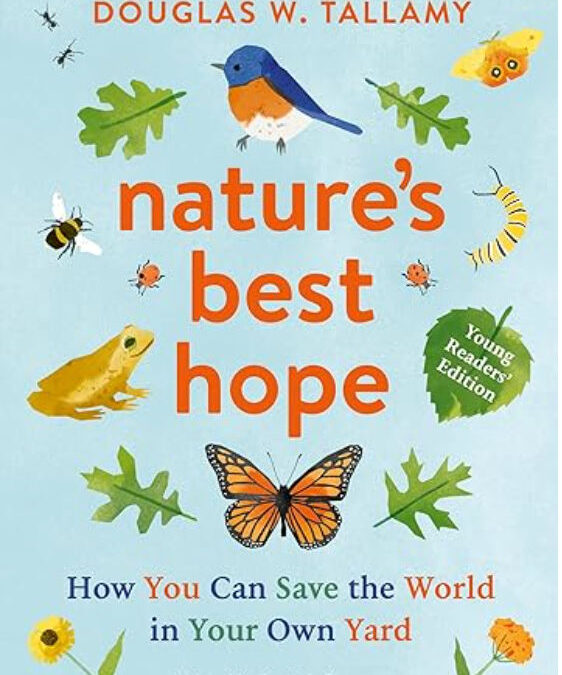Hope is right! Here is a book that gives kids reasons for hope and steps they can take to make positive contributions right where they live, a wonderful way to counteract the ‘doom-and-gloom’ side of conservation and climate change issues. The original edition of Nature’s Best Hope: A New Approach to Conservation That Starts in Your Yard, published in 2020 was, and remains, a tour de force, a review can be found here: Nature’s Best Hope.
Thanks to alert Colorado Native Plant Society member, Pam Sherman, who brought the youth edition to our attention and has written the following review.
 Sarah L. Thomson adapted the book. She has done the impossible: slimmed its arguments and its teaching into succinct points and stories that have the power to persuade and explain not just to middle schoolers but to anyone of any age the reasons why and the steps needed to plant and tend native trees, bushes, flowers, and ground covers.
Sarah L. Thomson adapted the book. She has done the impossible: slimmed its arguments and its teaching into succinct points and stories that have the power to persuade and explain not just to middle schoolers but to anyone of any age the reasons why and the steps needed to plant and tend native trees, bushes, flowers, and ground covers.
The language in this book is respectful and user-friendly, it provides great quotes for talking with or presenting to anyone who does not yet understand how vital this movement is. Use this book with neighbors, homeowners’ associations, city councils, friends, colleagues, people in line at the checkout counter, and, of course, teachers, parents, principals, groundskeepers, non-native plant gardeners and landscapers, and students of any age. Use it as a curriculum text for informal or formal courses, an intro to planting a native garden with kids or adults, or as an introduction to the “adult” version. Of course you’ll have to change some examples and concepts a bit to match our Colorado conditions, but the principles hold everywhere.
Some of the topics covered are: the history of the native ecosystem movement, why we all need to be doing this together (scale and inter-connectivity) and the difference one small part yard can make. The book explains in clear, down-to-earth language the problem with lawns. It explains the concept of the Homegrown National Park and why we need it, which plants are best, insects – “the little things that run the world,” the importance of heavy-hitting pollinators such as bees, of heavy-hitting plants such as oaks and goldenrods, how to make a simple bee hotel with paper, ten things you can do, and more FAQs.
It provides compelling arguments to shift Homeowners’ Associations’ perceptions of what is “beautiful” from what is normal-but-sterile to what is full of life and life-giving.
Make good use of Tallamy’s wisdom and Thomson’s adapted phrasing. This book can give us the power to turn Nature’s Best Hope into buzzing, exciting reality. It will fulfill the achievable promise of “saving the world in your own backyard,” schoolyard, and well beyond.
Pam Sherman
Colorado Native Plant Society

